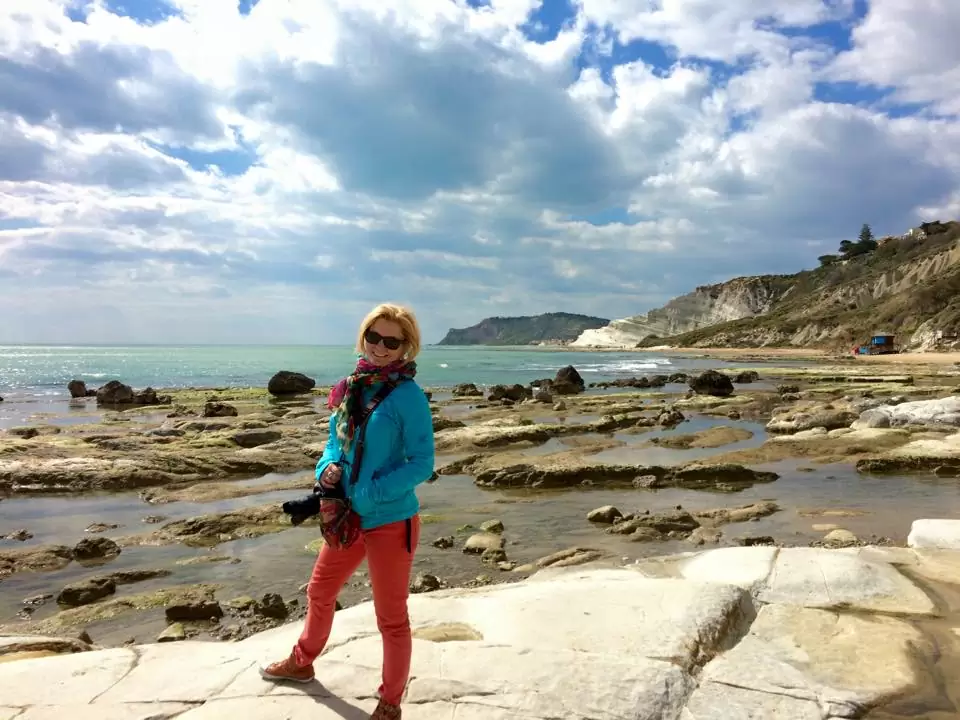How to Become a Travel Blogger starts with passion, a love for exploration, and the desire to share your experiences with the world. In today’s digital age, travel blogging has evolved from a simple hobby into a thriving career path for many.
Whether you dream of traveling full-time or want to document weekend getaways, becoming a travel blogger offers a unique way to blend storytelling, photography, and personal branding.
The first step is finding your niche—are you into budget travel, luxury escapes, solo adventures, or family trips? Once you know your angle, choose a memorable blog name, purchase a domain, and set up your website, ideally using a flexible platform like WordPress.
From there, focus on creating high-quality, helpful content that answers real questions travelers have.
Success doesn’t happen overnight. Growing a travel blog takes consistency, learning SEO, building an audience on social media, and networking with other bloggers and brands.
Over time, your blog can generate income through ads, sponsored posts, affiliate marketing, or even selling your own products.
Why Become a Travel Blogger?
Becoming a travel blogger offers the unique opportunity to turn your love for exploration into a lifestyle—and even a career.
It’s more than just posting vacation photos; travel blogging allows you to share personal stories, inspire others, and create a platform that can generate income and open doors to new experiences around the world.
One of the biggest appeals is the freedom it offers. As a travel blogger, you can work from anywhere, set your own schedule, and choose the destinations and topics that matter most to you.
It also gives you a chance to connect with a global community of fellow travelers, readers, and creators who share your passion.
Financially, successful travel bloggers can earn through affiliate links, sponsored content, digital products, and brand collaborations.
But beyond money, the rewards include personal growth, cultural enrichment, and the satisfaction of helping others plan better trips through your insights and recommendations.
Whether your goal is to travel full-time or simply document your adventures and tips, becoming a travel blogger can be a fulfilling and exciting path—especially for those who value freedom, creativity, and storytelling.
What You Need to Start a Travel Blog

Starting a travel blog doesn’t require a journalism degree or expensive equipment—it just takes the right combination of tools, mindset, and a bit of hustle.
Here’s what you need to get going:
A Clear Niche or Focus
Before anything else, decide what type of travel blogger you want to be. Will you cover budget travel, luxury escapes, food-focused journeys, or solo adventures? A niche helps attract a loyal audience and sets you apart in a crowded space.
A Blog Name and Domain
Choose a memorable, brandable name that reflects your niche and personality. Check for domain availability and secure it with a reputable hosting provider like Bluehost or SiteGround.
A Blogging Platform
WordPress.org is the most popular choice for travel bloggers due to its flexibility and scalability. You’ll also need a theme that’s mobile-friendly, fast, and visually appealing.
Basic Equipment
A smartphone with a good camera can be enough to start, but many bloggers also use DSLR cameras, laptops, and editing tools like Lightroom and Canva for quality content creation.
Social Media Accounts
Platforms like Instagram, Pinterest, and TikTok are essential for promoting your blog, driving traffic, and building a community.
Choosing a Niche for Your Travel Blog
One of the most important decisions you’ll make when starting a travel blog is choosing a niche. Your niche is the specific focus that sets your blog apart from the millions of other travel blogs out there. It defines your target audience and helps you create content that resonates with your readers.
Here’s how to narrow down your options and choose the right niche for you:
Assess Your Interests and Expertise
Think about what excites you most about travel. Do you prefer exploring hidden gems in nature, or are you drawn to luxurious resorts? Are you a foodie who loves to taste local cuisines, or do you enjoy adventure activities like hiking or diving? Your passion will shine through in your content, so it’s important to choose something that genuinely excites you.
Research Your Audience
Who do you want to reach with your blog? Families, solo travelers, digital nomads, luxury seekers, or budget backpackers? Understanding your audience’s interests will help you tailor your content and grow your blog.
Find a Unique Angle
While there are many travel bloggers out there, finding a unique angle within your niche can make all the difference. For example, instead of just “luxury travel,” you could focus on “affordable luxury travel” or “luxury travel on a budget.” A unique angle helps you stand out in a competitive market.
Check Market Demand
Research what topics are trending in the travel industry. Use tools like Google Trends, BuzzSumo, or even social media to gauge what people are interested in. While it’s great to be passionate about a topic, it’s also important to ensure there’s an audience for it.
Think About Long-Term Sustainability
Your niche should be something you’re not only passionate about now but will still be excited to write about in the long term. Consistency is key to building a successful blog, so choose a niche that offers plenty of opportunities for content creation.
Picking the Perfect Blog Name and Domain

Your blog name and domain are crucial elements of your travel blog’s identity. They not only represent your brand but also make it easier for readers to find and remember you.
Here’s a step-by-step guide to help you pick the perfect name and domain for your travel blog:
Make It Memorable and Catchy
The best blog names are short, catchy, and easy to remember. Avoid overly complicated names or long phrases that readers might forget or misspell. Try using alliteration or play on words to create something that sticks in people’s minds.
Reflect Your Niche and Brand
Your blog name should give readers an idea of what your travel blog is about. If you’re focusing on luxury travel, you might want a sophisticated name. For adventure or budget travel, a fun, energetic name could be a better fit. Your name should set the tone for your blog’s content and appeal to your target audience.
Keep It Simple and Easy to Spell
Complicated names with hard-to-spell words can confuse your audience. Aim for a name that’s easy to pronounce and type into a search engine or social media. This will help avoid misspellings and ensure your blog is easily discoverable.
Check Domain Availability
Once you have a few name ideas, check if the corresponding domain name is available. Use websites like Namecheap or GoDaddy to search for domain availability. Ideally, you want your blog name to be the same as your domain for consistency. If your first choice is taken, try variations or use creative extensions like .travel or .co.
Consider Future Growth
Your blog name should allow for growth and flexibility. Even if you start in one niche (like budget travel), you might want to expand into other areas (such as food or luxury travel). Choose a name that won’t limit your scope or pigeonhole you into one topic.
Ensure Social Media Handles Are Available
Consistency is key when building your brand. Once you’ve picked your blog name, check to see if the corresponding social media handles (Instagram, Twitter, Facebook, etc.) are available. If they’re taken, it could make it harder for you to grow your online presence.
Make It Unique
Do a quick Google search to ensure that your chosen name isn’t already in use by another blogger or brand. A unique name helps you avoid confusion and potential legal issues down the line.
Get Feedback
Once you have a list of possible blog names, ask friends, family, or fellow travelers for their input. Sometimes a fresh perspective can help you identify the perfect name—or point out any potential problems with a name.
Setting Up Your Travel Blog (Step-by-Step)
Setting up your travel blog can seem like a daunting task, but with the right guidance, it’s a manageable and exciting process.
Here’s a step-by-step guide to help you set up your travel blog, from securing a domain name to launching your first post:
Choose a Blogging Platform
The first step is choosing a blogging platform. WordPress.org is the most popular choice for travel bloggers due to its flexibility, ease of use, and wide range of customizable themes and plugins. You’ll need self-hosted WordPress (not WordPress.com), which allows you to have full control over your site.
Pick a Hosting Provider
Choose a reliable hosting provider to store your blog’s files and make your website accessible to visitors. Popular options for travel bloggers include Bluehost, SiteGround, and WP Engine. These services often offer one-click WordPress installations, making the setup process easy.
Register Your Domain Name
Your domain name is the web address where visitors will find your blog (e.g., www.yourtravelblog.com). Pick a domain name that reflects your niche, is easy to remember, and ideally matches your blog’s name. Most hosting providers also allow you to register your domain name when signing up for hosting.
Install WordPress
After purchasing your hosting plan, you’ll typically have an option to install WordPress with just one click. Once installed, you can log in to the backend of your site (also known as the WordPress dashboard) to begin customizing your blog.
Choose a Theme
Select a WordPress theme that suits your blog’s style and functionality. There are many free and premium themes available, including those specifically designed for travel blogs. Choose one that is responsive (mobile-friendly), lightweight, and customizable. Popular theme providers include ThemeForest and Elegant Themes.
Install Essential Plugins
Plugins are tools that add additional functionality to your site. Some essential plugins for a travel blog include:
- Yoast SEO (for search engine optimization)
- Jetpack (for performance and security)
- WPForms (for creating contact forms)
- Akismet Anti-Spam (to block spam)
- UpdraftPlus (for backups)
Customize Your Blog’s Design
Once your theme is installed, it’s time to customize your blog’s design. Go to the “Customize” option in the WordPress dashboard to adjust things like your blog’s logo, colors, fonts, and layout. Make sure your design is clean, user-friendly, and easy to navigate.
Create Essential Pages
Before you start posting content, set up a few essential pages for your blog:
- About Page: Share who you are, why you’re blogging, and what readers can expect from your travel blog.
- Contact Page: Allow readers and potential collaborators to reach out to you.
- Privacy Policy & Disclaimer: It’s essential to have these pages, especially if you’re planning to monetize your blog or collect user data.
Write Your First Blog Post
Now comes the fun part—creating content! Your first blog post should introduce your readers to who you are and what they can expect from your travel blog. It’s also a great idea to write a few more posts to populate your blog, such as “Top 10 Must-Visit Destinations” or “How I Travel on a Budget.”
Optimize for SEO
To ensure your blog is discoverable, you need to optimize your content for search engines. Use plugins like Yoast SEO to guide you in writing SEO-friendly titles, meta descriptions, and keyword-optimized content. Make sure your images are compressed for faster load times and include alt text.
Set Up Google Analytics
Google Analytics is a free tool that tracks your website’s performance and helps you understand your audience. Set it up to monitor your traffic, popular posts, and other metrics so you can improve your content and strategy over time.
Launch and Promote Your Blog
Once everything is in place, it’s time to hit “Publish” and share your blog with the world! Promote your posts on social media platforms like Instagram, Twitter, Pinterest, and Facebook. You can also network with other bloggers to get your name out there and potentially collaborate on guest posts.
How to Create Engaging Travel Content

Creating engaging travel content is key to attracting and retaining readers. Travel blogging is all about sharing your experiences and inspiring others to explore the world.
To make your content stand out, you need to tell compelling stories, provide valuable information, and connect with your audience.
Here are some tips on how to create engaging travel content:
Tell Personal, Authentic Stories
People love reading stories that are personal, relatable, and authentic. Share your experiences in a way that resonates with your audience. Whether it’s about getting lost in a foreign city or discovering a hidden gem, personal stories make your content unique and engaging. Use humor, emotions, and real-life experiences to create a deeper connection with your readers.
Use Stunning Photography and Visuals
Travel blogging is a highly visual field, and great images can bring your stories to life. Use high-quality photos that showcase the beauty of the places you visit. Capturing unique landscapes, colorful street scenes, or candid moments will keep your readers hooked. If you’re not a professional photographer, invest time in learning basic photography skills and editing.
- Tip: Use editing tools like Adobe Lightroom or free apps like Snapseed to enhance your photos.
- Tip: Experiment with video content, especially short-form videos for platforms like Instagram and TikTok, to boost engagement.
Provide Practical Tips and Advice
Travel content that’s useful and informative has a lasting impact. Readers are always looking for tips to make their trips smoother. Share advice on budgeting, packing, the best time to visit a destination, or how to navigate a foreign country. Posts like “10 Things to Know Before Visiting Paris” or “The Ultimate Packing List for Backpackers” will be valued by readers and search engines alike.
Engage with Your Audience
Don’t just publish your content and walk away. Engage with your readers by responding to comments and asking for feedback. Create opportunities for interaction by encouraging your readers to share their own travel stories or tips. You can also use social media to ask questions or run polls to encourage active participation from your audience.
Write Catchy Headlines and Intros
Your headline is the first thing people will see, and it plays a major role in whether or not they’ll click on your post. Make sure your titles are compelling, clear, and include keywords that people are searching for. Once your reader clicks on the article, your intro should hook them in right away, encouraging them to continue reading.
- Tip: Use numbers in your titles like “Top 5 Hidden Gems in Italy” or “7 Budget Travel Hacks You Need to Know.”
Incorporate SEO Best Practices
SEO (Search Engine Optimization) is critical for driving traffic to your blog. To make your travel content discoverable, focus on optimizing your posts for relevant keywords. Use tools like Google Keyword Planner or Ubersuggest to research terms that people are searching for. Make sure to include these keywords in your titles, headers, and throughout your content.
- Tip: Use internal links (linking to your own posts) and external links (linking to reputable sources) to boost SEO.
- Tip: Optimize images by using alt text with descriptive keywords to improve your search engine ranking.
Create Evergreen Content
While sharing the latest trends or news can be exciting, evergreen content (topics that are always relevant) tends to attract long-term traffic. Posts about “What to Pack for a Beach Vacation” or “Best Travel Apps for 2025” can remain helpful for months or years. Focus on creating content that will continue to bring value over time.
Use Different Content Formats
Variety keeps your readers engaged. Don’t just rely on text-based posts—incorporate videos, infographics, and podcasts into your content strategy. Video tutorials, travel vlogs, and behind-the-scenes footage from your travels can be highly engaging for your audience.
- Tip: Consider writing guides, tutorials, or even creating downloadable resources (like checklists) to offer your readers something more.
Optimize for Mobile Devices
With the majority of travel content being consumed on mobile devices, it’s crucial to ensure that your blog is mobile-friendly. Choose a responsive theme that adjusts well to all screen sizes, and keep your content easily readable with short paragraphs, headings, and bullet points.
Be Consistent with Posting
Regularly publishing fresh content keeps your blog active and signals to both readers and search engines that your site is continuously updated. Set a posting schedule that works for you and stick to it. Consistency also helps build trust with your audience, who will return regularly for new insights.
Collaborate with Other Travel Bloggers
Collaborating with other travel bloggers can broaden your reach and introduce you to new audiences. Consider guest posting on other travel blogs or inviting fellow bloggers to contribute to your site. This helps you build a sense of community while increasing visibility.
Use Calls to Action (CTAs)
Include clear calls to action in your posts, such as asking readers to sign up for your newsletter, share your content on social media, or comment on the post. CTAs encourage readers to take action and interact with your blog beyond just reading the content.
Essential Tools and Platforms for Travel Bloggers
As a travel blogger, having the right tools and platforms can streamline your workflow, improve the quality of your content, and help you reach a wider audience.
From content creation to promotion and monetization, the following tools are essential for any travel blogger looking to grow their brand and make the most of their blogging journey:
Website Hosting and Domain Providers
To get your travel blog up and running, you’ll need a reliable hosting provider and a unique domain name. The right hosting platform ensures that your website runs smoothly and is easily accessible to visitors.
- Recommended Tools:
- Bluehost: Offers one-click WordPress installation and a free domain for the first year.
- SiteGround: Known for fast, reliable hosting with great customer service.
- WP Engine: A premium hosting provider tailored for WordPress users, offering excellent speed and security.
WordPress (or Blogging Platform)
WordPress is the most popular and flexible platform for bloggers. It allows you to easily create and manage your travel blog, customize your site, and add features through plugins and themes.
- Why WordPress:
- It’s user-friendly and open-source.
- A wide variety of themes and plugins are available to enhance functionality and design.
- WordPress is SEO-friendly, helping you optimize your content for search engines.
Content Management & Editing Tools
High-quality content is at the heart of a successful travel blog. These tools help you write, edit, and optimize your posts to ensure they resonate with readers.
- Recommended Tools:
- Google Docs: Simple and free, Google Docs is great for drafting and collaborating with others.
- Grammarly: An essential tool for grammar and spell-checking, helping you produce polished content.
- Hemingway Editor: A writing tool that improves readability and ensures your content is concise and clear.
SEO Tools
Search engine optimization (SEO) is crucial for driving organic traffic to your travel blog. SEO tools help you identify keywords, optimize your content, and monitor your site’s performance in search engines.
- Recommended Tools:
- Yoast SEO: A popular WordPress plugin that provides SEO recommendations for each post.
- Google Keyword Planner: A free tool from Google to research relevant keywords for your blog posts.
- Ahrefs: A comprehensive SEO tool that helps with keyword research, backlinks, and competitive analysis.
- SEMrush: An all-in-one tool for SEO and digital marketing, providing keyword research, site audits, and competitor analysis.
Social Media Management Tools
Social media is key to promoting your travel blog, engaging with readers, and building your brand. These platforms help you manage your social media accounts, schedule posts, and track performance.
- Recommended Tools:
- Buffer: Schedule posts for multiple social media platforms like Facebook, Instagram, and Twitter.
- Hootsuite: A powerful tool for managing social media accounts, scheduling content, and tracking engagement.
- Canva: A user-friendly graphic design tool that helps create eye-catching images for social media posts, infographics, and blog banners.
Photo and Video Editing Software
Great visuals are essential for a travel blog. These tools help you edit and enhance photos and videos, making your content visually appealing and engaging.
- Recommended Tools:
- Adobe Lightroom: A professional photo editing software used to enhance travel photos.
- VSCO: A mobile-friendly app with filters and editing tools for quick photo edits on the go.
- Adobe Premiere Pro: A top choice for video editing, perfect for creating stunning travel vlogs.
- Final Cut Pro: A popular video editing software for Mac users.
Email Marketing Platforms
Building an email list allows you to connect with your audience on a deeper level. Email marketing platforms help you capture leads, send newsletters, and nurture your audience.
- Recommended Tools:
- Mailchimp: A user-friendly email marketing platform with free and paid plans, perfect for beginners.
- ConvertKit: A powerful tool for email marketing and automating sequences to nurture your audience.
- AWeber: Another great tool for creating email campaigns, managing subscribers, and automating workflows.
Monetization Tools
As a travel blogger, you can monetize your content through affiliate marketing, sponsored posts, ads, and selling products or services. These tools help you generate income from your blog.
- Recommended Tools:
- Amazon Associates: An affiliate marketing program that lets you earn commissions by promoting products.
- Google AdSense: Display ads on your blog and earn revenue based on clicks or impressions.
- ShareASale: A popular affiliate marketing platform with a wide range of travel-related products and services.
- Patreon: A platform where your readers can support you with monthly contributions, often in exchange for exclusive content.
Analytics Tools
Tracking your blog’s performance helps you understand what’s working and where you can improve. Analytics tools give you insights into your audience, traffic sources, and content performance.
- Recommended Tools:
- Google Analytics: A free tool that tracks your website traffic and gives you detailed reports on user behavior.
- Google Search Console: Monitor your site’s search performance and see which keywords are driving traffic.
- Hotjar: Provides heatmaps and user session recordings to help you understand how visitors interact with your site.
Collaborative Tools
Collaboration with other bloggers, brands, and content creators is key to growing your network and boosting your blog’s exposure. These tools help facilitate communication and collaboration.
- Recommended Tools:
- Trello: A project management tool that helps you organize your tasks, deadlines, and collaborations.
- Slack: A communication platform for team collaboration, perfect for working with other bloggers or brands.
- Google Drive: Store, share, and collaborate on documents, spreadsheets, and presentations with ease.
Booking and Travel Tools
As a travel blogger, you’ll need to book flights, accommodation, and activities. These tools help you plan your travels and manage your itinerary.
- Recommended Tools:
- Skyscanner: A flight search engine that compares prices and finds the best deals.
- Booking.com: Popular for booking hotels, hostels, and vacation rentals worldwide.
- Airbnb: Offers unique, locally-owned accommodation options for a more personalized travel experience.
- TripAdvisor: A trusted platform for reviews on hotels, restaurants, and attractions.
Conclusion
Becoming a successful travel blogger involves more than just sharing your adventures—it requires a strategic approach, the right tools, and a consistent effort to create engaging content.
With the essential tools and platforms listed above, you can streamline your workflow, enhance the quality of your blog, and expand your reach.
From choosing the right hosting provider to using social media management tools and optimizing your content for SEO, these resources will help you build a professional travel blog that resonates with your audience.
Remember, the key to success in travel blogging lies not just in beautiful photos and captivating stories, but in maintaining a steady commitment to learning, growing, and adapting to the changing digital landscape.
With the right mindset and tools in hand, you’ll be well on your way to sharing your travel experiences with the world and turning your passion into a profitable and fulfilling career.

